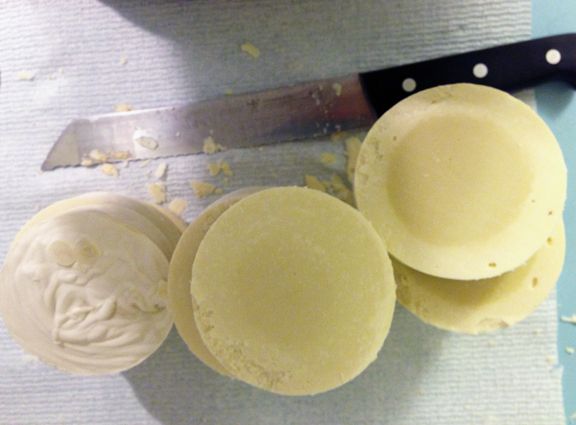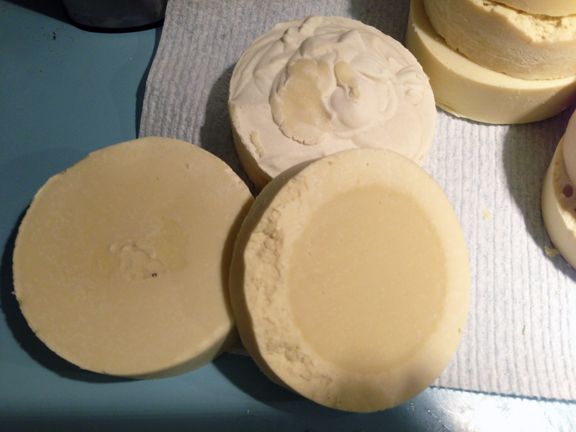Sihir
Well-Known Member
- Joined
- Jul 15, 2013
- Messages
- 65
- Reaction score
- 29
So this summer I've been having some "problems" with soda ash on my soaps, but it's been the rainiest and most humid spring and summer the state has seen in a long time, so I haven't been stressing about it too much. But on my most recent batch, I noticed a strange ring and a strange pattern developing. The top (on the left in below photo), like usual, developed a layer of soda ash.

Then the next section or two down that I cut, was the color I expected. (Middle slice.) But halfway down the log of soap, this definite ring pattern emerged (right-hand slice). It faded down at the other end of the tube as well.
Here's another shot of the second batch showing the same pattern in the same order. (Top most slice at top, second to third slice counterclockwise from top, then a middle slice.)

Any ideas?

Then the next section or two down that I cut, was the color I expected. (Middle slice.) But halfway down the log of soap, this definite ring pattern emerged (right-hand slice). It faded down at the other end of the tube as well.
Here's another shot of the second batch showing the same pattern in the same order. (Top most slice at top, second to third slice counterclockwise from top, then a middle slice.)

Any ideas?





